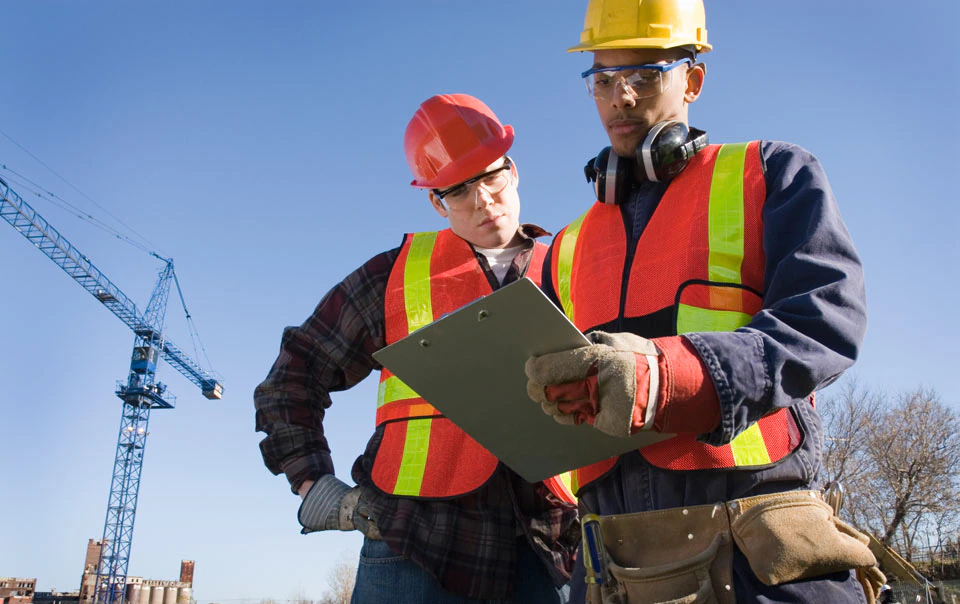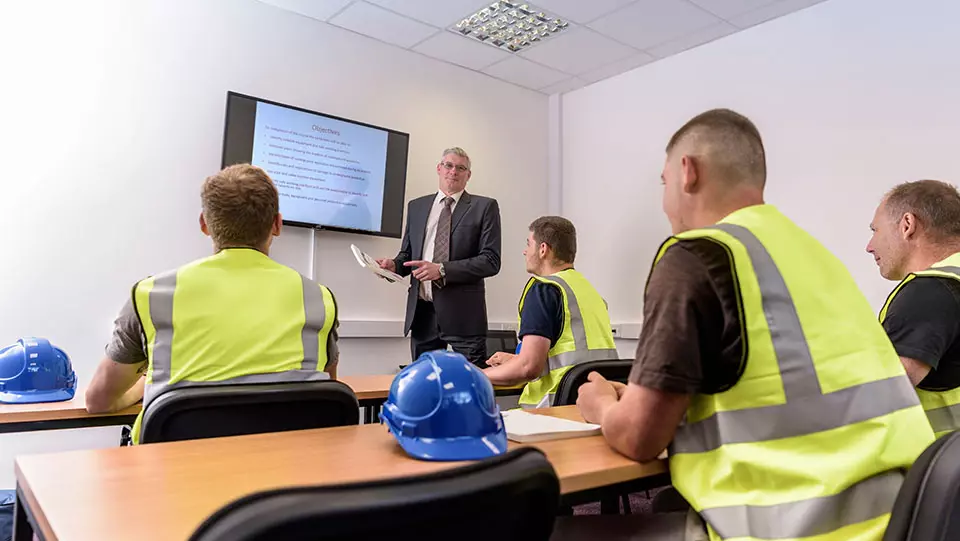3 Key Subsurface Risks for Marine Contractors

(MUSIC PLAYING)
(DESCRIPTION)
Travelers Logo
TEXT: Subsurface Risks for Marine Contractors
(DESCRIPTION)
Graphic shows a crane actively working on a barge in the water.
(SPEECH)
There are many visible risks for marine contractors to consider when using heavy equipment from barges or floating work platforms. But there are also considerable subsurface risks to consider.
(DESCRIPTION)
Graphic shows the barge with trucks and a crane on it hit and break apart a dock.
TEXT: Property Damage, Serious Injury
(SPEECH)
In the event of an accident on a construction site in or around water, substantial property damage can occur as well as serious injury to your construction crew members.
(DESCRIPTION)
Graphic shows the claw from a crane submerge under the water to scoop up communication lines. Various icons pop-up for disrupted utilities, repair costs and crew endangerment.
TEXT: Unidentifiable Cables Communications Lines and Pipelines
(SPEECH)
For example, unidentified cables, communications lines, and pipelines can be challenging to locate and work around. Hitting a buried line can disrupt utility service, become costly to repair, and endanger crew members.
(DESCRIPTION)
Graphic shows an overhead view of a docked barge. Words pop up with alerts and then turn into checkmarks.
TEXT: Considerable Crew Exposures, Size, Mode of Operation, Vessel Stability
(SPEECH)
Considerable crew exposures-- during certain tasks or around certain equipment, barge- mounted crane equipment can pose a hazard due to their size, mode of operation, and their potential effect on vessel stability. So proper training and a safety program can be critical to proactively managing the risks.
(DESCRIPTION)
We remain on the overhead view of a docked barge during the night with poor lighting. Another ship crashes into the barge. A pop-up of an injured worker icon appears.
TEXT: Improper Marine Navigational Lighting
(SPEECH)
Improper marine navigational lighting can present a hazard to vessel navigation and a potential liability exposure. And allision with stationary equipment can cause damage to the vessels involved as well as serious injury to workers.
(DESCRIPTION)
Travelers Logo
(SPEECH)
While these subsurface risks may seem daunting, Travelers resources can help.
(DESCRIPTION)
Graphic shows a crane actively working on a barge in the water. Move slide into a split screen where an icon with a person inside pops up, along with three document stacks. The barge is back on full screen and a Travelers umbrella appears to highlight the risks on the barge. Another icon with a person appears along with an icon for legal counsel that turns into a checkmark.
TEXT: Risk Control Professionals, Operations Manual, Safety & Reporting, Crew Hiring & Training, Claim professional
(SPEECH)
From maintaining equipment to helping with worker safety, Travelers Risk Control professionals can assist marine contractors in their evaluation of established plans and programs to prepare for the risks they may face and help prevent accidents. And if a loss does occur, our claim professionals are supported by legal counsel that specialize in marine losses so that they can vigorously defend our customers' interests.
(DESCRIPTION)
Graphic shows a balance beam held up by an icon of hands shaking. On the left side is an icon for a Contractor and on the right side is an icon for a Subcontractor. Risk icons come in to keep it balanced.
TEXT: Contractors, Subcontractors
(SPEECH)
Marine projects involve complex relationships among contractors and subcontractors. We help contractors pursue contractual risk transfer so the correct party bears the responsibility.
(DESCRIPTION)
Travelers red umbrella
(SPEECH)
With coverage and services designed for marine contractors, you are protected before and after a loss. Ask your independent agent about Travelers Insurance for marine contractors. And visit travelers.com/marinesubsurfacerisks.
(DESCRIPTION)
Travelers logo
TEXT: To learn more speak with your independent agent or visit us at travelers.com/MarineSubsurfaceRisks
© 2023 The Travelers indemnity company. All rights reserved. This material does not amend, or otherwise affect, the provisions or coverages of any insurance policy or bond issued by Travelers. It is not a representation that coverage does or does not exist for any particular claim or loss under any such policy or bond. Coverage depends on the facts and circumstances involved in the claim or loss, all applicable policy or bond provisions, and any applicable law. Availability of coverage referenced in this document can depend on underwriting qualifications and state regulations.
Construction on land is dangerous. Construction in and around water adds an additional layer of risk for contractors. Heavy equipment on floating platforms, changing weather and constant motion require contractors to navigate on-the-job exposures carefully to prevent potentially catastrophic accidents.
Here are three major risks for construction work performed underwater:
1. Unidentified cables, communications lines and pipelines
Utility companies have been laying pipes and cables underwater for decades – to transport telecommunications, water and electricity to households and businesses. On land, utilities can be readily marked and avoided. Underwater, they can be challenging to locate and work around, adding an extra layer of risk for marine contractors. Hitting a buried line can disrupt utility service, be costly to repair, and cause serious injury and death. With more underwater cables and pipelines being installed every day, this risk continues to grow.
2. Considerable crew exposures
Marine construction can be hazardous for everyone involved. When things go wrong, accidents can be catastrophic, especially when it involves dredging.
Dredging equipment, such as buckets, clamshells and cutterheads, is heavy, powerful and often unwieldy to maneuver. The cables required for operation can cause injuries when tension is released or a malfunction occurs. The force from ruptured high-pressure hydraulic systems can cause significant crew injuries or death. Cranes pose a particular hazard because of their size, mode of operation and potential effect on vessel stability. A proper training and safety program is critical to proactively managing the unique risks to crews posed by marine operations.
3. Improper marine navigational lighting
Barges, marine construction equipment and pipelines can be at job sites for weeks at a time. Without proper lighting, they can present a substantial hazard to navigation and create a significant liability exposure. A collision with a stationary barge, dredge, dredge pipe or other hazard can cause considerable damage to the vessels involved and have tragic consequences, including serious injuries and loss of life.
The right insurance helps marine contractors manage the costs of maritime risks
Marine contractors who work with Travelers benefit from deep experience, industry expertise and specialized resources designed to help them mitigate risks. Ask your insurance agent about Travelers insurance for your marine contractors.
Learn how Travelers can be an advantage to your marine contracting operation.



